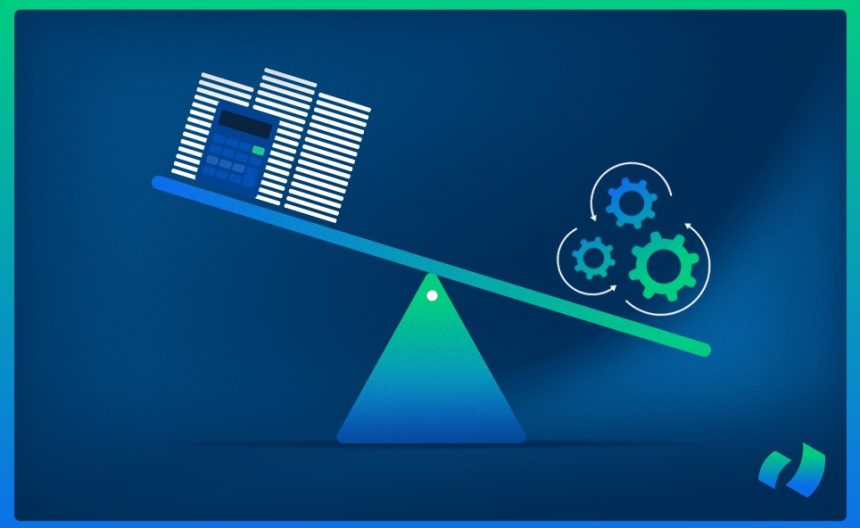In the fast-changing business environment of today, efficiency and precision in financial transactions have emerged as key determinants of success. Conventional manual processes of processing invoices, involving paper records, manual data entry, and physical filing systems, are increasingly being seen as obsolete and inefficient. Progressive organizations are adopting technological tools that simplify these processes, with invoice processing automation at the forefront of the change. This new way replaces manual processing with automated workflows that capture, interpret, authorize, and settle invoices with little human intervention. The advantages go far beyond mere time savings, reaching nearly every element of an organization’s financial processes and strategic abilities. This article explores the numerous advantages businesses can gain by implementing automated solutions for their invoice management systems, helping financial leaders understand how this technology can positively impact their operations.
Understanding Invoice Processing Automation
Before delving into the benefits, it’s important to understand what invoice processing automation actually entails. This technology leverages digital tools to transform the entire invoice lifecycle—from receipt to payment—into a streamlined, largely hands-off process. When invoices arrive – in either electronic or paper formats – the system automatically captures key information using advanced technologies such as optical character recognition (OCR) and artificial intelligence. The information is then validated against receiving documents and purchase orders, routed through digital approval processes, and ready for payment based on predetermined schedules and rules. The whole process takes place without the time-consuming, error-prone manual handling of the past. Contemporary solutions recognize and accommodate different invoice layouts from multiple vendors, improve through corrections over time, and can be easily integrated with current accounting and enterprise resource planning systems to build a seamless financial ecosystem.
Dramatic Time and Cost Savings
One of the most obvious and tangible advantages of using automation to process invoices is the dramatic shortening of processing time and cost per invoice. Processed manually, invoice handling involves many steps—physically sorting documents, typing data, looking up purchase order matches, hunting down approvers, filing paper, and so on. Each step ties up valuable staff time and causes delays. Computerized systems shorten this timeline exponentially, with bills passing through the system in a matter of days compared to the weeks it would take with manual processes. Studies repeatedly indicate that organizations can decrease processing costs by 60-80% following implementation. The savings come from lower labor costs, lower costs of error correction, fewer late payment penalties, and more consistent capture of early payment discounts. For companies processing hundreds or thousands of invoices each month, these productivity savings mean significant bottom-line gains that repay the initial investment in implementation quickly.
Improved Accuracy and Reduced Errors
Human mistake is a necessary evil of manual processing—from transposed numbers and duplicate payments to lost documents and coding errors. Even the most conscientious employees make the occasional error when handling large numbers of invoices. Automation significantly lowers these error rates by doing away with manual entry of data and applying consistent validation rules to all invoices. The system can automatically highlight differences between invoices and purchase orders, detect possible duplicates before payment is made, and guarantee mathematical correctness in the process. Validation algorithms pick up errors that human eyes may not notice, like faulty tax calculations or suspicious pricing fluctuations. This increased accuracy not only avoids expensive errors but also establishes vendor trust with consistent, accurate payments. Further, the elimination of exception handling saves considerable time for accounting personnel who otherwise spend hours researching and correcting discrepancies.
Better Cash Flow Management
Good cash flow management demands visibility and control—two things standard invoice processing techniques frequently fail to provide. With paper-based processes, finance leaders often struggle to identify outstanding obligations or forecast future payment requirements with accuracy. Automated invoice processing eliminates this doubt in favor of clarity by offering real-time visibility into every pending invoice, status of approval, and payment due date. This clearness makes more strategic decisions possible regarding when payments can be released, allowing organizations to better maximize cash positions without compromising vendor relationships. Sophisticated systems can suggest payment timing based on supplier terms, cash available, and possible early payment discount. The ability to accurately predict future cash needs weeks ahead provides management with greater financial planning confidence and eliminates the surprise payment demands that tend to impede cash flow in manual environments.
Faster Approval Cycles
In manual environments, the approval of invoices tends to be a major bottleneck. Paper invoices physically move between departments, languish in in-boxes, and sometimes disappear altogether—causing delays and frustration for everyone. Digital workflows in automated systems transform this experience by electronically routing invoices to the correct approvers, issuing automatic reminders when action is required, and enabling mobile approvals for decision makers on the go. The system monitors the status of each invoice in real-time, so nothing slips through the cracks. Approval hierarchies and delegation rules support organizational structures and vacation calendars, preserving process flow even when critical staff are not available. Improved Visibility and Reporting
Decision making based on data demands access to complete, accurate information—something manual processing systems cannot deliver.
Invoice processing automation provides a centralized store of invoice data that supports robust reporting and analysis capabilities. Financial executives can automatically produce reports indicating spending habits, vendor concentrations, payment timing, and processing statistics without the time-consuming data collection of conventional methods. This increased visibility enables opportunities for vendor consolidation, term renegotiation, or process enhancement. Exception reports identify anomalous patterns that may signal problems needing attention. Conclusion Implementation of invoice processing automation is a strategic move that provides multiple levels of value across an organization.
From cost and time savings immediately to increased strategic capabilities via better visibility and control, the benefits go far beyond mere efficiency gains.
As companies continue to be under pressure to streamline operations while raising service levels, automated invoice management solutions provide a tried-and-tested route to these seemingly conflicting objectives. The technology has advanced to the point where risks of implementation are low, and return on investment is normally immediate. Companies that adopt these solutions set themselves up for greater financial flexibility, better vendor relationships, and more strategic resource usage. Further into the digital era that we are heading, invoice processing automation will become a not only competitive advantage but also a bedrock necessity for winning financial operations.














